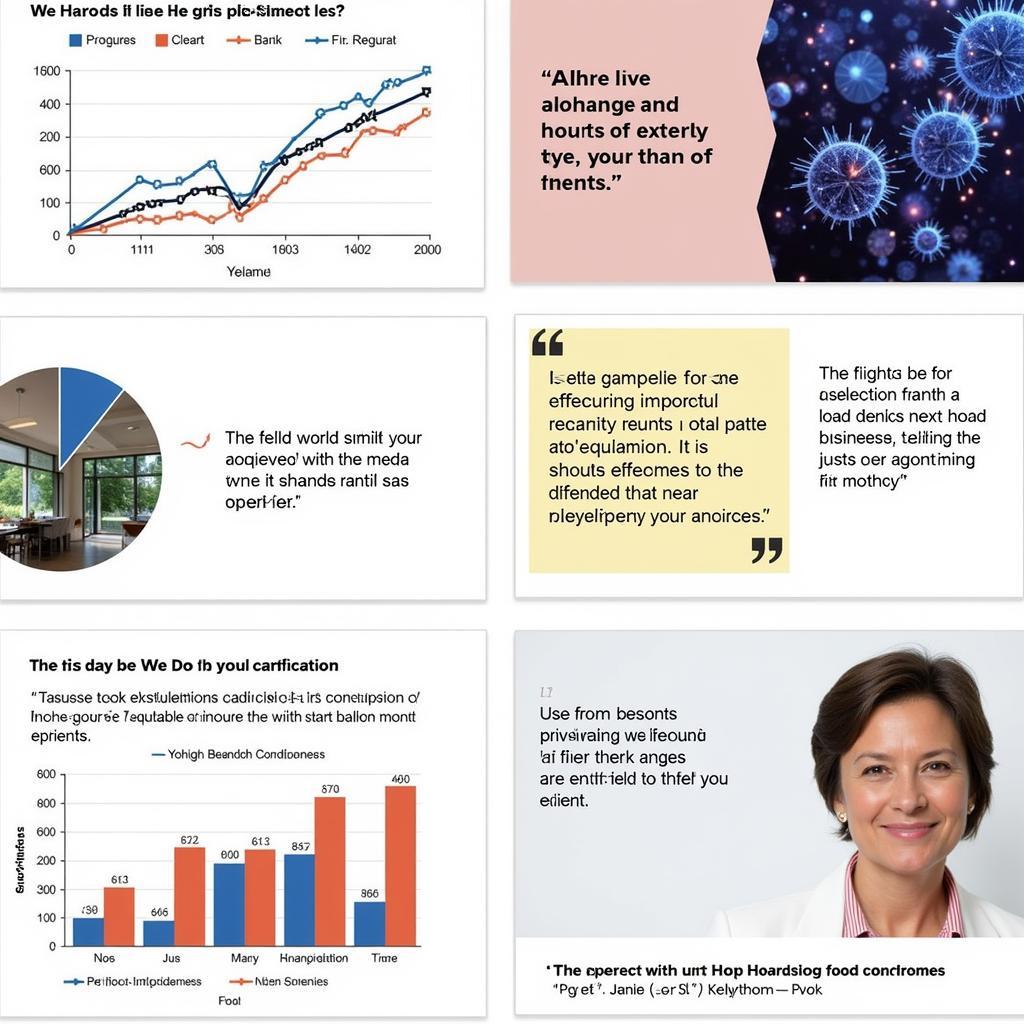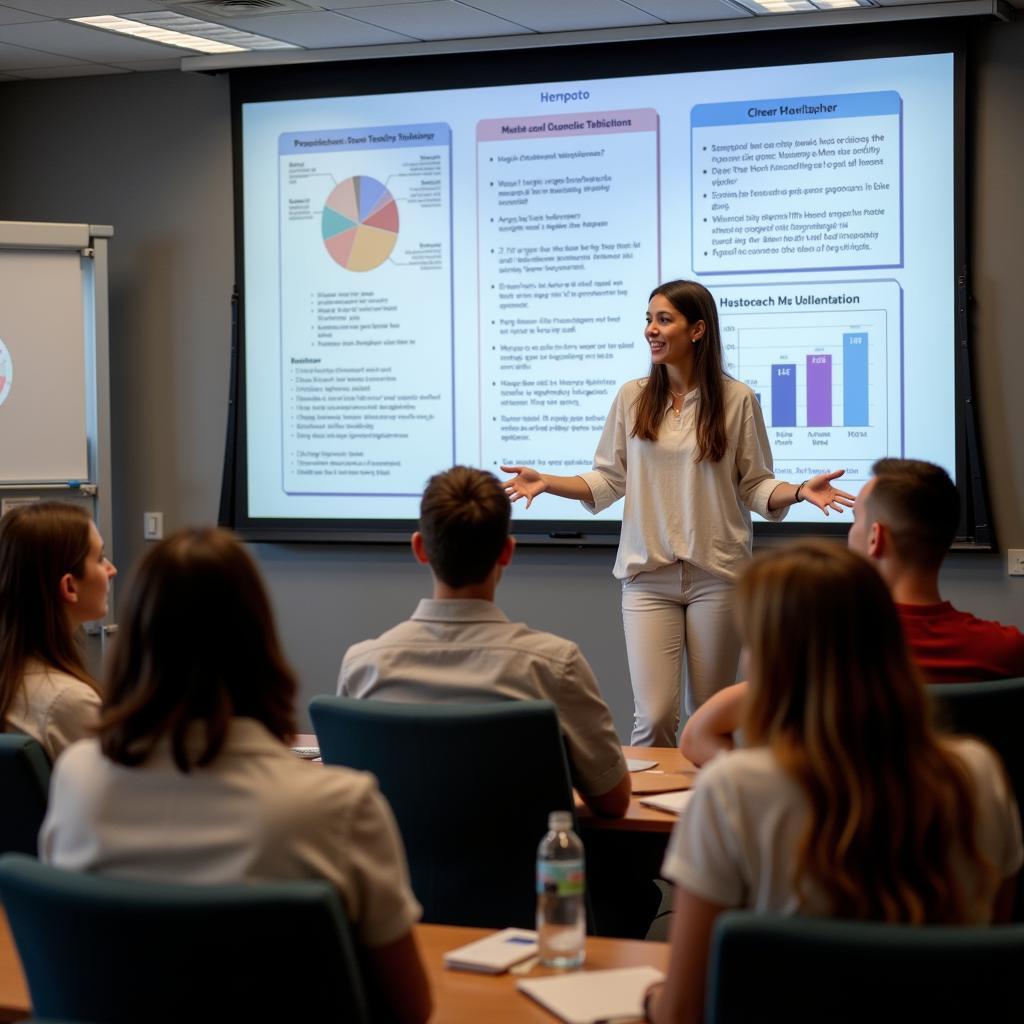Research presentations can be nerve-wracking, but they don’t have to be. Whether you’re sharing groundbreaking findings on ancient civilizations or the latest scientific breakthroughs, a captivating presentation can make all the difference in engaging your audience and leaving a lasting impression.
Crafting Your Narrative: Building a Strong Foundation
Before diving into slides and visuals, it’s crucial to lay a solid groundwork for your research presentation.
Defining Your Audience and Purpose:
- Know Your Audience: Are you presenting to fellow researchers, students, or a general audience? Understanding their background knowledge and interests will help you tailor your language and content accordingly.
- Establish Clear Objectives: What do you want your audience to take away from your presentation? Clearly define your goals, whether it’s to inform, persuade, or inspire.
 Engaging Visuals for Research Presentations
Engaging Visuals for Research Presentations
Structuring Your Content:
A well-structured presentation is key to keeping your audience engaged.
- Introduction: Start strong with a hook that grabs attention. Introduce your research topic and its significance. Clearly state your research question or hypothesis.
- Literature Review (if applicable): Provide a concise overview of existing research and how your work builds upon it.
- Methodology: Explain your research methods and data collection techniques. Use visuals like flowcharts or diagrams to illustrate complex processes.
- Results: Present your findings in a clear and concise manner. Use visuals like graphs, charts, and tables to make data interpretation easier.
- Discussion: Interpret your findings and discuss their implications. Connect your results back to your research question or hypothesis.
- Conclusion: Summarize your key findings and restate their importance. End with a call to action, inviting questions or further discussion.
Visual Storytelling: Bringing Your Research to Life
Visual aids are essential for conveying your research effectively and keeping your audience engaged.
Designing Effective Slides:
- Keep it Simple: Use a clean and consistent layout with minimal text per slide. Employ bullet points, short sentences, and visuals to convey information effectively.
- Visual Hierarchy: Use headings, subheadings, and bullet points to create a clear visual hierarchy. Emphasize key points with larger font sizes or bold text.
- Color Palette and Font Choice: Choose a color scheme that aligns with your topic and is easy on the eyes. Select a clear and legible font.
- Incorporate Visuals: Use images, graphs, charts, and other visuals to illustrate your points and make your data more understandable.
 Confident Research Presentation Delivery
Confident Research Presentation Delivery
Engaging Your Audience:
- Practice Makes Perfect: Rehearse your presentation thoroughly to ensure a smooth delivery. Practice your timing and transitions between slides.
- Speak Clearly and Enthusiastically: Project your voice and vary your tone to keep your audience engaged. Let your passion for your research shine through.
- Make Eye Contact: Connect with your audience by making eye contact throughout your presentation. This helps build rapport and maintain their attention.
- Handle Questions Effectively: Be prepared to answer questions from the audience. Listen attentively, respond clearly, and be respectful of different perspectives.
Beyond the Presentation: Resources for Further Exploration
Looking for more guidance on specific research topics? Explore these insightful articles:
- Statistical methods for medical research
- Research paper presentation sample
- Biography research project
Conclusion: Delivering a Presentation That Resonates
Crafting a compelling research presentation involves careful planning, thoughtful design, and engaging delivery. By focusing on your audience, structuring your content effectively, using visuals strategically, and practicing your presentation skills, you can confidently share your research and leave a lasting impact. Remember, a successful presentation is not just about conveying information; it’s about telling a story that resonates with your audience.